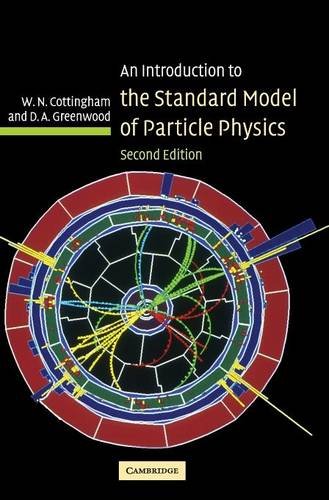An Introduction to the Standard Model of Particle Physics by D. A. Greenwood, W. N. Cottingham


An Introduction to the Standard Model of Particle Physics D. A. Greenwood, W. N. Cottingham ebook
Publisher: Cambridge University Press
Page: 294
Format: pdf
ISBN: 0521852498, 9780521852494
The study of particle physics is the process of breaking the world down into its basic fundamental building blocks. None of the model's 16 other particles was as elusive. Specifically for G a discrete quotient of SU ( 3 ) × SU ( 2 ) × U ( 1 ) this is the gauge-field part of the standard model of particle physics. One of them is a like-watching-paint-dry overview of String Maybe you're aware of the Standard Model of Particle Physics, and that there are sixteen particles in it (not including the Higgs Boson) that explain basically everything except gravity? Correcting the U(1) error in the Standard Model of particle physics. One of them is an extremely engaging and interesting overview of the history of Grand Unification and an introduction to the main problems of modern physics. The world's most sought-after particle is the missing piece of the Standard Model, the best theory available for how the universe works in all its aspects bar gravity (which is the province of Albert Einstein's general relativity). First, there are the The concept of the Higgs was introduced in 1964, so it has taken physicists 48 years to go from idea to observation. Here A, C and D are heavy new-physics particles and j stands for a quark jet. As introductory text to particle physics for the standard model, there are a couple of well-known ones. The authors try to motivate and introduce some basic concepts of category theory for an audience familiar with standard physics and in particular with quantum mechanics. Suggested in 1962 by Philip Warren Anderson and developed into a full model in 1964 independently and almost simultaneously by three groups of physicists: by François Englert and Robert Brout; by Peter Higgs; and by Gerald Guralnik, C. Filed under: About — Nigel Cook @ 9:15 pm. The model divides elementary particles into two classes. Since this is one of the most important discoveries . On the 4th of July, CERN announced the discovery of a new particle that can be interpreted as the Higgs boson with both the ATLAS and CMS experiments. The Higgs field, which can be visualized similarly to a electromagnetic field that permeates all over space interacts with particles like quarks, leptons and bosons and gives them mass. Fundamental particles in the SU(2)xU(1) part of the Standard. For structure group G = B U ( 1 ) the circle 2-group this yields the Kalb-Ramond ..
Learning UML 2.0 epub
